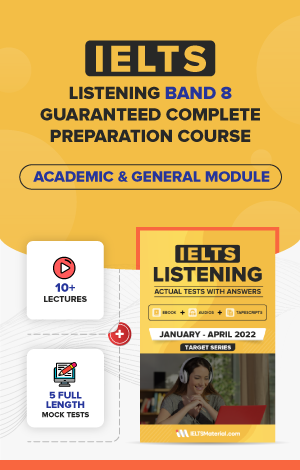“15 Days’ Practice For IELTS Speaking” is an IELTS speaking ebook, part of an IELTS ebook series for learners who want a roadmap on how to prepare for IELTS in 15 days. This series includes 4 different ebooks :
15 Days’ Practice For IELTS Writing15 Days’ Practice For IELTS Speaking (Book+ CD) 15 Days’ Practice For IELTS Listening (Book+ CD)15 Days’ Practice For IELTS Reading

4.8 of 5

4.6 of 5

4.8 of 5

4.8 of 5
You have certainly practised a great deal to prepare for your actual exam. You have alsobeen exposed to a variety of materials,and have familiarised yourself with the format of the IELTS test. This book, therefore, does not aim at loading you with more practice materials on IELTS, but it will sum up the main points so that you can work out an effective plan to finally achieve your desired IELTS band score in your actual test. This also comes with an IELTS speaking audio CD.
Đang xem: Download 15 Days Practice For Ielts Book Series Pdf
| Day 1 | The IELTS Speaking TestI. An OverviewII. How to prepare for the IELTS Speaking TestII. Communly-Seen Problems in the IELTS Speaking TestIV. Useful Tips for the IELTS Speaking Test |
| Day 2 | The IELTS Speaking Test – Part 1I. An OverviewII. Question Types and How to do Well |
| Day 3 | Part 1 – Common Topics (1)I. HometownII. Marriage and FamilyIII. Child and ChildhoodIV. WeatherV. Education |
| Day 4 | Part 1 – Common Topics (2)VI. WorkVII. City or City LifeVIII. Traffic and TransportIX. TourismX. Technology and Skills |
| Day 5 | Part 1 – Common Topics (3)XI. Hobbies and InterestsXII. SportsXIII. Holidays and FestivalsXIV. EntertainmentXV. Accommodation |
| Day 6 | Part 1 – Common Topics (4)XVI. ClothesXVII. Food and DrinksXIX. Future Plans and Ambitions |
| Day 7 | The IELTS Speaking Test – Part 2I. An OverviewII. Common TopicsIII. RemindersIV. How to do wellV. Categorised Topics |
| Day 8 | Part 2 – Common Topics (1)I. Describing a PersonII. Describing a PlaceIII. Describing an Event |
| Day 9 | Part 2 – Common Topics (2)IV. Describing an Object or an AnimalV. Describing a Hobby or a HabitVI. Describing a Process |
| Day 10 | Part 2 – Common Topics (3)VII. Describing ExperiencesVIII. Describing TechnologyIX. Describing Something Ideal or Imaginary |
| Day 11 | The IELTS Speaking Test – Part 3I. An OveriewII. Useful tipsIII. Common Topics and SuggestionsIV. Transition Signals in Giving OpinionV. Concluding |
| Day 12 | Part 3 – Common Topic (1)I. EducationII. AdvertisingIII. MarriageIV. FamilyV. Sports |
| Day 13 | Part 3 – Common Topics (2)VI. TelevisionVII. NewsVIII. ShoppingIX. Environmental ProtectionX. Diet and health |
| Day 14 | Part 3 – Common Topics (3)XI. Career and WorkXII. Social ProblemsXIII. Travel and TourismXIV. AnimalsXV. HealthcareXVI. Crime and PunishmentXVII. Science and Technology |
| Day 15 | Simulated TestsI. Sample TestsII. IELTS Speaking Practice |
Day 1 Sample : The overview of the IELTS Speaking Test
Read Day 1 Sample & Download Ebook Now
The IELTS Speaking test is the same for both the Academic and General Training modules.It is different from the other parts of the IELTS test because it is a one-to-one interactionbetween a candidate and an examiner. The three parts of the test give the candidate the opportunity to use a wide range of speaking skills.The Speaking test is recorded.The following table is the format of the IELTS Speaking test:
Part 1 – Introduction and Interview (4-5 minutes) : The examiner introduces himself / herself and confirms the candidate’s identity by asking questions about the candidate. Next, the examiner asks the candidate about familiar topic frames.Part 2 – Individual Long Turn (3-4 minutes) : The examiner asks the candidate to speak for 1-2 minutes on a particular topic. Information is given on a card and the candidate has 1 minute to prepare before he / she starts. The examiner asks one or two questions after the candidate’s presentation.Part 3 – Two-way Discussion (4-5 minutes) : The examiner invites the candidate to partici- pate in a discussion of a more abstract topic related to the topic on the card in Part 2.
Xem thêm: Hướng Dẫn Làm Thủ Tục Mua Xe Exciter Trả Góp, Mua Trả Góp Exciter 150 Lãi Suất 0% Như Thế Nào
The IELTS Speaking test has been designed to test your ability to engage in a conversationand to test how well you can communicate your thoughts and opinions.The IELTS Speaking test is the shortest of the components of the IELTS test – only 11 to14 minutes. In this short time, you have to convince the examiner who will be speaking withyou of your level of English.
As you have seen in the table above, the Speaking test is divided into 3 parts :
Part 1 involves general introduction. Here, the examiner checks that he or she has theright person by confirming the candidate’s name, origin, and identification. This part is alsodesigned to help the candidate relax and it takes only a few seconds. Then, the examinerasks the candidate about familiar topics in life such as his/her country, home town, family,studies/jobs, free-time activities, future plans, etc.This part takes about 4 or 5 minutes.
Part 2 is the individual long turn talk. It provides an opportunity for the candidate todeliver a long, uninterrupted response. The examiner will give the candidate a cue card witha subject such as education, family, work, interests, and lifestyle and some cues or a fewguiding questions on the card. These questions are short and the structure of the questionsis simple. The candidate must talk for 1 to 2 minutes on this subject. He or she is expectedto demonstrate an ability to construct a long sample of English.The examiner will assess thecandidate’s fluency, coherence, range of structures, pronunciation, and vocabulary.The candidate has an optional 1 minute in order to prepare for his/her talk and is provided with some paper and a pencil in order to make some brief notes. After the candidate’stalk, the examiner will ask 1 or 2 brief questions in order to finish off this part which takesabout 3-4 minutes.
Xem thêm: Xe Tay Ga Tốt Nhất Hiện Nay Tại Việt Nam, +15 Xe Tay Ga Nào Tốt Nhất (2021)
Part 3 is the most complex testing part. Here, the examiner will prompt and lead the candidate to a series of questions on the topic spoken about in Part 2. For example, in Part2, you may have to describe a favourite teacher and in Part 3, you may have to discusseducation in your country. These questions will be more demanding and require some critical analysis on the part of the candidate.The examiner is still in control, but must allow thecandidate to produce longer utterances or discuss the questions. You will be scored on howeffectively you can develop the abstract ideas on the IELTS test.These questions and discussions may take 4 or 5 minutes.Note that in Part 1 of the Speaking test, questions cannot be changed or reworded. In Part3, there is more flexibility. If the candidate does not understand a word in the question, orthe question itself, it is possible for the candidate to ask for repetition or clarification.Overall, try to stick to the topic in this specific part of the IELTS test. This is the sectionwhere the examiner will really try to get an understanding of your knowledge. Be sure to useproper grammar and accents when appropriate.
Free download “15 Days’ Practice for IELTS Speaking” (pdf Ebook & Audio)
Download EbookMirror 1